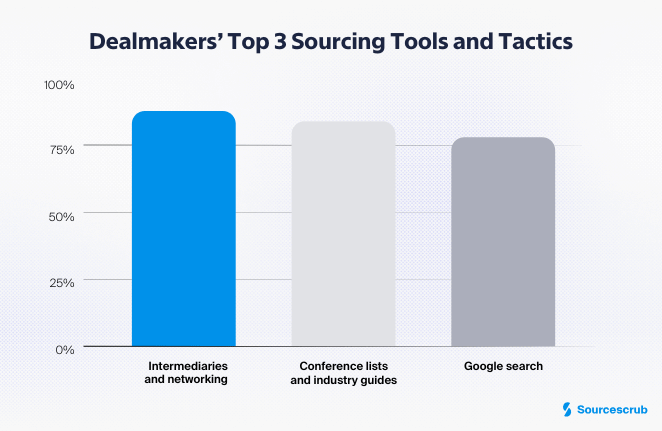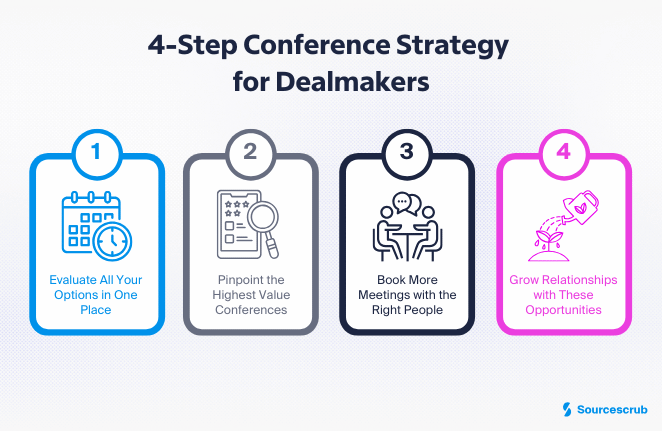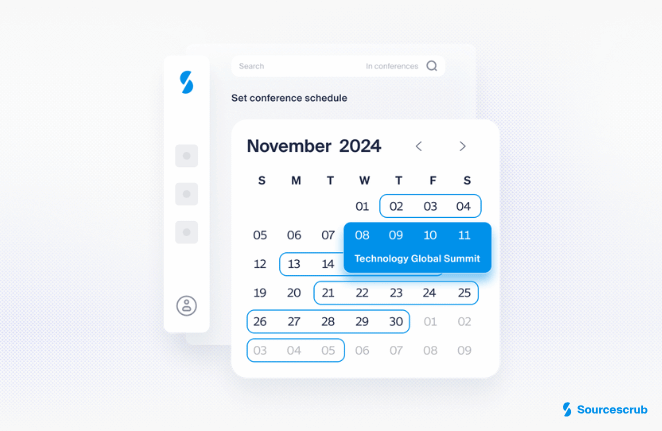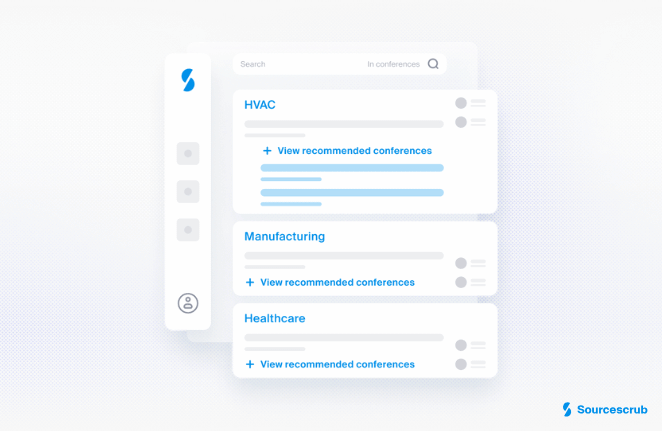
Trade shows give dealmakers an unmatched opportunity to pack a ton of company research and prospect meetings into just a few days. That’s why it comes as no surprise that dealmakers recently voted networking (88%) and conference lists (84%) as the two most popular methods for identifying, researching, and connecting with companies.

“Throughout the funnel these conferences play a pretty important part,” said VP of Business Development for BW Forsyth Partners, Joe Stevens, in a recent interview. “It’s a great way to map [a new] market to really understand who is participating and build those initial relationships. But then as you move down the funnel it’s a great check-in point, because an owner may know that they want to sell at some point but they're just not there, so making sure you're putting in effort to establish those relationships and stay top of mind, and sticking around and being a friendly face as they get closer, is really important.”
But while trade shows have been among dealmakers’ top sourcing strategies for decades, major technology advancements, ongoing market uncertainty, and today’s highly competitive and increasingly specialized market require organizations to rethink traditional conference strategies.
Historically, harnessing conferences as part of your deal origination efforts meant attending all the big shows and meeting as many people as possible. However, wandering expo halls in hopes of running into a high-quality, transaction-ready opportunity simply isn't efficient or reliable.
Conferences also tend to be expensive, which makes generating a return on your trade show investment especially critical. This requires using the latest data and technology to efficiently evaluate all of your options, pinpoint the highest value trade shows, and build relationships with targets prior to (and after!) attending.
Unfortunately, research shows that little more than half of organizations use data and technology to improve conference attendance strategy and planning. The rest of this post will provide a four-step event strategy and action plan used by some of today's top dealmakers to maximize deal flow from trade shows. Then we will wrap it up with some pro tips for conference lead generation.

There are literally thousands of trade shows each year in the US alone. Yet many dealmakers continue to manually track these conferences using an ad hoc collection of spreadsheets and calendars — an error-prone, time-consuming, and siloed process.
One of the fastest ways to eliminate this busywork is to centralize all conference planning activities. New solutions are emerging that allow dealmakers to access upcoming conference attendee lists, collaborate to build lists of interesting and promising shows, and manage event statuses — all in one place.
Trade shows can be organized by focus like industry or location, viewed on a shared calendar, and submitted to leadership for review and approval. This highly organized, systematic approach ensures that teams can see all the possibilities and quickly make the most educated decisions about which events to attend — all without taking resources away from more strategic work.

There are a number of valid reasons why dealmakers may choose to attend a conference, including the opportunity to learn about a new sub-sector or technology. But usually the deciding factor is whether any existing or new opportunities will be there. However,spending weeks manually scrubbing a single conference list searching for a few relevant attendees simply isn't efficient.
By leveraging the latest conference planning technology, modern firms can quickly identify which trade shows the companies that currently exist in their CRMs are planning to attend. These tools also make it possible to filter a conference list, such as HLTH or HIMSS, by various company data points like ownership type or employee count.
This allows you to see whether any additional, previously unknown companies that align with your organization’s specific investment thesis or criteria will be there. Dealmakers can then attend the conferences with the highest concentration of highly relevant opportunities and skip the rest!
Recent advancements in generative artificial intelligence (GenAI) have even made it possible to automatically send dealmakers a “daily digest” of high-value, upcoming trade shows. These powerful recommendations are generated when multiple companies on your organization’s target list are scheduled to attend a particular conference, or when a new trade show list appears similar to a conference your firm is already planning to attend.

Identifying the companies you want to meet at a trade show is only half the battle. How can you make sure you stand out from the crowd and get the facetime with them that you need to establish a meaningful connection and build M&A pipeline?
There are several data service providers and deal sourcing platforms on the market, each of which offers a specific type of company information, from network and relationship data to proxy revenue information for bootstrapped businesses. In addition to finding contact information for executive leaders who will be in attendance, savvy organizations use these tools to research top targets and get answers to questions like:
Using data signals like these to personalize outreach to founders and operators shows that you've done your homework and are highly interested in their business and knowledgeable about their space. This helps dealmakers successfully schedule meetings and fill their calendars before attending events. These details can also be used to spark exhibit hall conversations and accelerate in-person relationship building, giving your firm a significant leg up on the competition.
Post-conference follow-up is imperative to nurture the relationships you make at events and keep your firm top of mind. For example, Forsyth’s Joe Stevens recently shared a success story about a trade show that he attended nearly three years ago! “We booked ten or eleven meetings. Some of these companies are still fully engaged with us…I’m hopeful that one or two could be partners in the next twelve months,” he said.
Here are a few sample reasons top firms like Forsyth use to reach out and continue to build rapport with top targets post-event:
Having the right technology in place makes fostering relationships with top targets much easier. For example, some deal sourcing platforms can monitor target companies and automatically alert firms when outreach-worthy events like those listed above happen in real time.
Top firms also use CRMs like Salesforce and Dynamo to keep track of all company contact details, key events, and relevant conversations. Having all this information in one place allows teams to deliver much more timely, engaging, and meaningful outreach over time.
In addition to following these four steps, check out this list of simple yet highly impactful conference attendance planning pro tips we’ve gleaned from various dealmakers over the years:
While there’s no substitute for the power of human connection, technology and data have advanced to a point where they can help operationalize and accelerate many conference lead generation activities. Generating a positive return on these investments is much easier when you’re able to see all the possibilities, pinpoint the right conferences, book meetings in advance, and build relationships with connections over time.
To learn more about what’s possible — including ways to automatically pass conference information to your CRM and how AI can help you draft personalized outreach at scale — download this guide: Build More Connections at Every Event: How to Give Your Conference Attendance Strategy a Modern Makeover.
Need a fast and easy way to see the top up-and-coming industry conferences for this year? From manufacturing to agriculture to consumer electronics, we’ve got you covered.